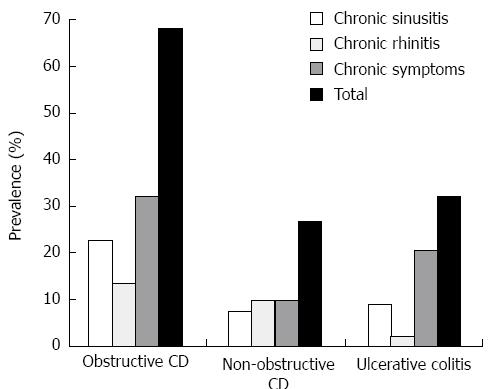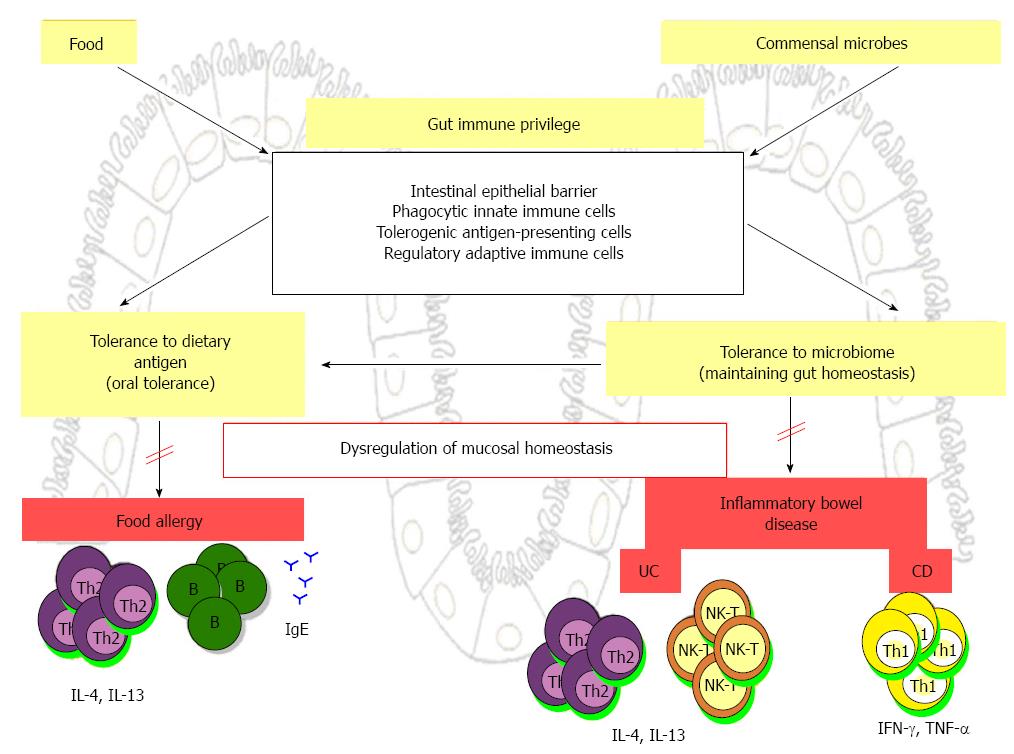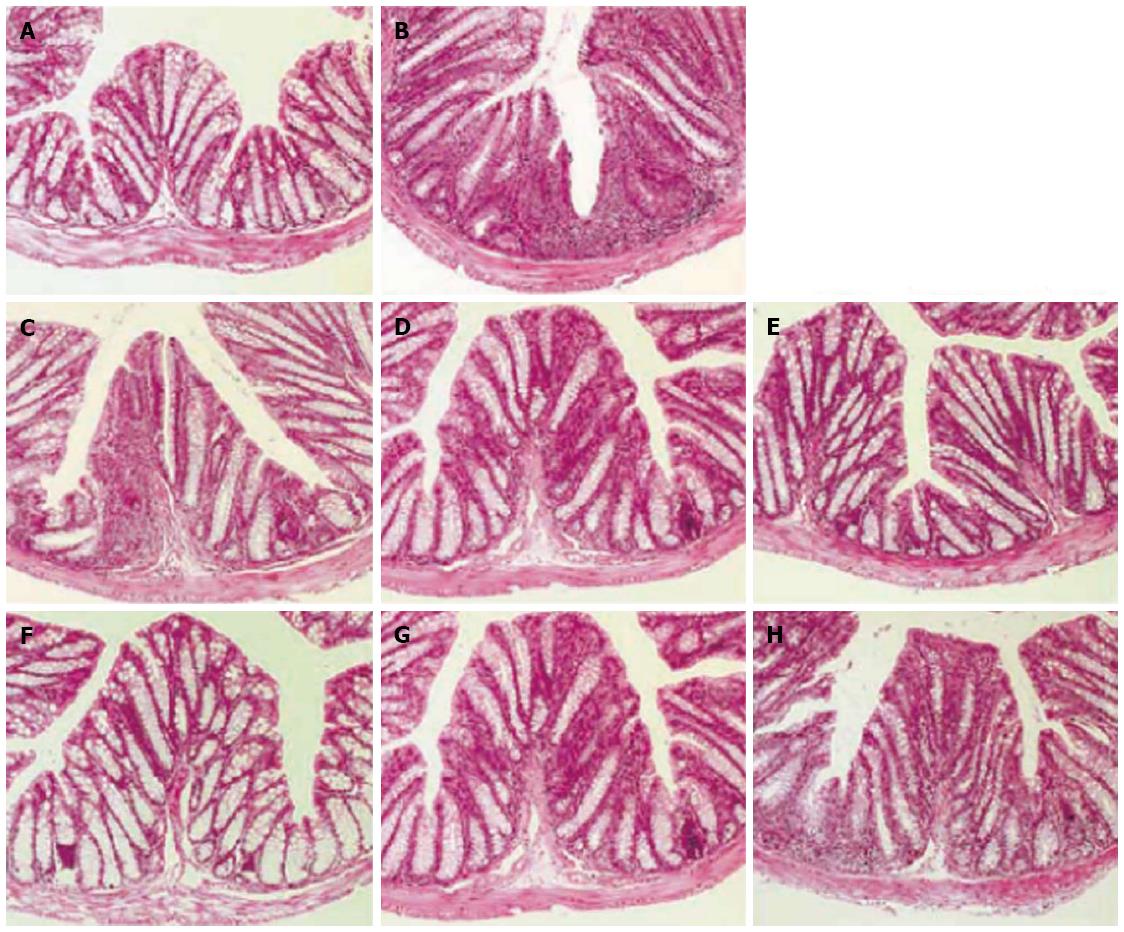Copyright
©2014 Baishideng Publishing Group Inc.
World J Gastroenterol. Aug 28, 2014; 20(32): 11023-11032
Published online Aug 28, 2014. doi: 10.3748/wjg.v20.i32.11023
Published online Aug 28, 2014. doi: 10.3748/wjg.v20.i32.11023
Figure 1 Prevalence of sinonasal disease in inflammatory bowel disease patients.
Reproduced with permission from reference Book et al[34]. CD: Crohn’s disease.
Figure 3 Histologic analysis of the colon in C57BL/6 mice.
A: Normal architecture of the colonic mucosa from mice treated with 50% ethanol alone; B: Erosions of the epithelium, distortion of crypts, loss of goblet cells, and massive mononuclear cell infiltration in lamina propria in mice after administration of trinitrobenzene (TNBS); C-E: TNBS-induced colitis is dose-dependently improved by curcumin. Mice were treated with 0.5% (C), 2.0% (D), or 5.0% (E) curcumin just after administration of TNBS; F-H: Mice were treated with 2% curcumin in preventive mode (F), early therapeutic mode (G), or late therapeutic mode (H) (original magnification × 50). Reproduced with permission from reference Sugimoto et al[66].
- Citation: Kotlyar DS, Shum M, Hsieh J, Blonski W, Greenwald DA. Non-pulmonary allergic diseases and inflammatory bowel disease: A qualitative review. World J Gastroenterol 2014; 20(32): 11023-11032
- URL: https://www.wjgnet.com/1007-9327/full/v20/i32/11023.htm
- DOI: https://dx.doi.org/10.3748/wjg.v20.i32.11023











